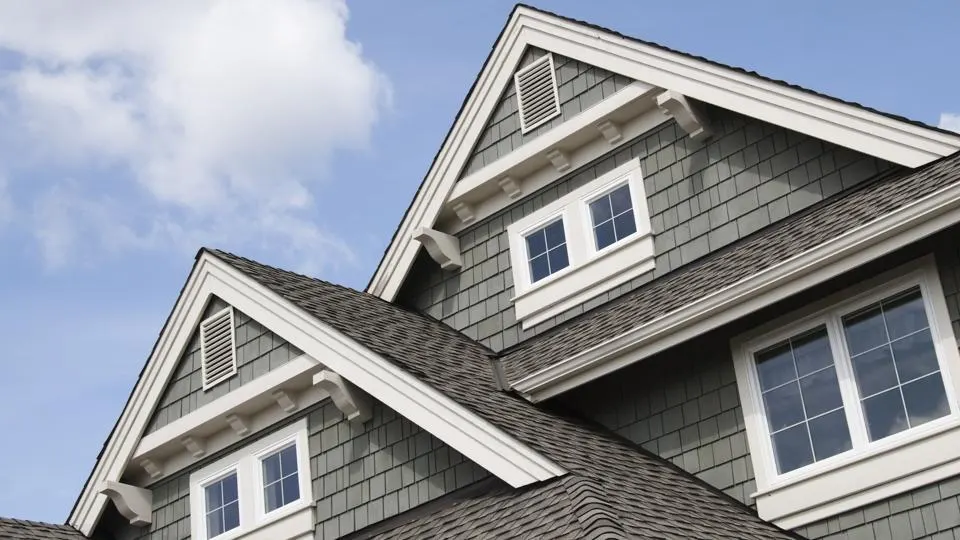
What a difference a month makes.
Mortgage rates began August below 7% before hitting 7.23%—the highest rate in more than two decades, according to Freddie Mac.
Housing market watchers expect mortgage rates to remain elevated amid ongoing economic uncertainty and the Federal Reserve’s rate-hiking war on inflation. Most are hopeful that, following some more volatility, rates will decline to some degree later this year, assuming inflation continues to cool.
Mortgage Rates Soar to Highest Levels in Decades as Fed Signals More Tightening
The broader economy has remained remarkably resilient in the face of the 18-month-long smackdown between the Federal Reserve and inflation.
Yet, as the battle rages on, still-high inflation and the Fed’s aggressive actions to tame it continue to pummel the housing market by indirectly driving long-term mortgage rates to their highest levels in years.
Though the headline inflation reading in July came in at 3.2%—well below the 9.1% peak in June 2022—it remains above the Fed’s 2% target.
At their July meeting, Fed officials lifted the central bank’s benchmark federal funds rate—the borrowing rate for commercial banks and credit unions—by 25 basis points to a 5.25% to 5.5% range. A basis point is one-hundredth of one percentage point.
The indirect impact of further Fed rate hikes this year portends increases to the average 30-year, fixed-rate mortgage—which blew past 7% in mid-August.
Federal Reserve Chair Jerome Powell acknowledged that the Fed’s tightening policies have hampered the housing market. Even so, Powell and fellow policymakers made it clear at the Fed’s annual Jackson Hole summit last month that they plan to raise rates higher unless inflation steadily moves down to the Fed’s two percent inflation target.
The Fed’s next two-day meeting takes place September 19-20.
Mortgage Rate Predictions for September 2023
Here’s how other experts predict market conditions will affect the 30-year, fixed-rate mortgage in the coming months:
- Realtor.com economist Jiayi Xu. “The trajectory of mortgage rates hasn’t unfolded exactly as we expected. We anticipated higher mortgage rates early in 2023 and a gradual decline as inflation pressure retreated, but we’ve seen almost the exact opposite pattern. We still expect that mortgage rates will reverse course and trend downward if improvements in inflation persist and show some sticking power.”
- First American Financial Corporation chief economist Mark Fleming. “It’s likely that mortgage rates continue to hover in the 6.5% to 7.5% range for the remainder of the year, which means affordability will remain a challenge for many home buyers.”
- New American Funding CEO and co-founder Rick Arvielo. “Once the Fed has telegraphed that they are at the end of their tightening cycle, you should see rates take a noticeable step down as fixed-income investors shift to lock-in duration at these higher rates. That new supply of long-bond buyers should bring rates down even before any easing from the Fed starts. This will likely ignite home buying, which could pose some issues due to our nation’s lack of housing inventory.”
- Bank of America head of retail lending Matt Vernon. “A Fed hike of 25 basis points won’t lead to significant shifts in mortgage rates but hints at another increase later this year may cause slight increases.”
- Palisades Group chief investment officer and co-founder Jack Macdowell. “While over the medium term, we expect a normalization bringing mortgage rates back to around 6%, predicting the timing is challenging. In the near term, our base case assumes mortgage rates tighten 25 to 50 basis points by the end of the first quarter 2024, or 7% to 7.25%.”
Is 2023 a Good Time To Refinance?
Over 40% of U.S. mortgages originated in 2020 and 2021, when mortgage rates were at record lows. There were also some 14 million mortgage refinances during the same time. If you were lucky enough to secure a mortgage then, 2023 is likely not the ideal time to refinance.
With rates substantially higher than a year ago, however, purchase and refinance applications remain stuck near their lowest level since the 1990s, according to Mortgage Bankers Association (MBA) data.
This is unsurprising considering that the average rate on a new refinance loan during the first half of 2023 was 6.4% compared to 4.2% for the original loan, according to a recent Freddie Mac report.
Those who are refinancing are doing so to tap into home equity, with cash-out refinances making up close to 90% of conventional refinance originations.
Despite close to 50% of owners with mortgages sitting on equity-rich homes, Freddie Mac predicts refinance activity will remain muted for the remainder of the year.
Even so, if you’re considering refinancing as a way to lower your monthly payment, keep in mind that not all options yield less interest over the life of the loan.
“Remember that just because you can get a lower rate, doesn’t mean you should immediately refinance,” says Vernon. “You may be paying a lower monthly mortgage, but you may have to also extend the life of your loan and refinancing could cost you more in interest.”
Mortgage Rate Trends
The average mortgage rate for a 30-year fixed is 7.12%, nearly double its 3.22% level in early 2022.
The average cost of a 15-year, fixed-rate mortgage has also surged to 6.55%, compared to 2.43% in January 2022.
ARMs might be more affordable than those with fixed rates. The latest average for a 5/1 ARM was 6.04%.
Mortgage Rates for September 2023

Refinance Rates for September 2023
The average rates for mortgage refinances are:
- 30-year fixed: 7.21%
- 15-year fixed: 6.75%
- 30-year jumbo: 7.32%
- 5/1 ARM: 5.96%
What Do Rates Mean for Refinancing in 2023?
After kicking off 2023 at 6.48%, mortgage rates went on a rollercoaster ride, oscillating between 6% and 7%, until finally blowing past 7% in mid-August.
Refinance activity took a dive in August, with volume falling in the first four weeks and finishing up 3% in the fifth week. Despite the uptick in the fifth week, activity was 28% lower compared to the same week one year ago, according to the MBA.
“The refinance market continues to be slow despite last week’s gain, which was driven by a 7.9% spike in conventional refinances,” said Joel Kan, vice president and deputy chief economist at MBA, in a press statement.
With rates some 160 basis points higher than a year ago and close to 92% of mortgaged homeowners sitting on rates of 6% or less, refinance activity is likely to remain stagnant until mortgage rates experience a significant, sustained dip.
How To Get a Lower Mortgage Refinance Rate
The good news is that, despite elevated rates, there are methods you can employ to secure a lower rate. These methods might be especially beneficial if you bought a home between mid-October and early November last year when rates were at their pinnacle.
Because there are closing costs and fees associated with refinancing, many mortgage experts say refinancing only makes sense if you can snag a rate that’s at least 1% lower than your present rate.
Here are some actions you can take to whittle down your refinance rate:
- Get rate quote estimates from at least three lenders
- Ask lenders about waiving or reducing closing costs
- Negotiate with your lender to match the best deal
- Take steps to strengthen your credit score
- Save for a larger down payment
- Choose a shorter-term loan
- Lock in the lowest rate
- Buy discount points
Mortgage Rate Predictions for the Next 5 Years
While predicting mortgage rates for the next five years is a tall order, especially considering the unprecedented fluctuations over the past year, experts say the low housing inventory will be a key factor in where rates go over the long term.
“When rates come down, we’re going to be in store for another hot housing market where there are more buyers than sellers jacking up prices because we haven’t solved the problem” of low inventory, says Daryl Fairweather, chief economist at Redfin. “It’s still that affordability problem. That’s going to stay with us.”
As far as which direction interest rates go in the years ahead, Fairweather expects declines. However, the timeline for this downward trend remains uncertain.
“In every scenario, rates are going to come back down,” she says. “It’s just a matter of when.”
That “when” for Melissa Cohn, regional vice president at William Raveis Mortgage, won’t be in 2023—but she doesn’t see it as too far off.
“Mortgage rates will decline over the course of the next two to three years as the rate of inflation declines and hopefully gets to the Fed target of 2%,” Cohn says. “Mortgage rates will be at least a full 2% lower by 2025.”
She adds that if the inflation rate holds at 2%, then we should see mortgage rates remain at lower levels for the balance of the next five years.
What Affects Mortgage Rates?
A complex set of factors impact mortgage interest rates, including broader economic conditions, the monetary actions of the Federal Reserve (to some extent) and inflation. However, long-term mortgage rates are directly impacted by the bond market. The rate you’re offered on a mortgage will also depend on the lender you work with, its business costs and your financial profile.
Demand for mortgages can also affect rates, pushing them higher as available capital for lending tightens. Conversely, when there’s less borrower demand—as we’re seeing now due to average interest rates hovering in the high 6% to low 7% range—lenders might consider offering more competitive rates or other incentives to attract borrowers.
How To Shop For the Best Mortgage Rate
Getting an optimal rate on a home loan can save you a significant amount of money over time. Here are some tips that can help you get the best rate possible for your situation:
- Keep your eye on rates. Mortgage rates are constantly changing. Keeping a close watch will make it easier to find and lock in a better rate.
- Check your credit. When you apply for a mortgage, the lender will review your credit to determine your creditworthiness as well as your interest rate. In general, the higher your credit score, the better your rate will be. To get an idea of where you stand, check your credit before you apply and dispute any errors with the appropriate credit bureau to potentially boost your score.
- Shop around and compare lenders. Consider options from as many mortgage lenders as possible to find the best deal for you. Prospective buyers have saved more than $1,500 over a loan’s term by getting two quotes from lenders and saved roughly $3,000 when they sought five quotes, according to Freddie Mac.
Source: forbes.com

